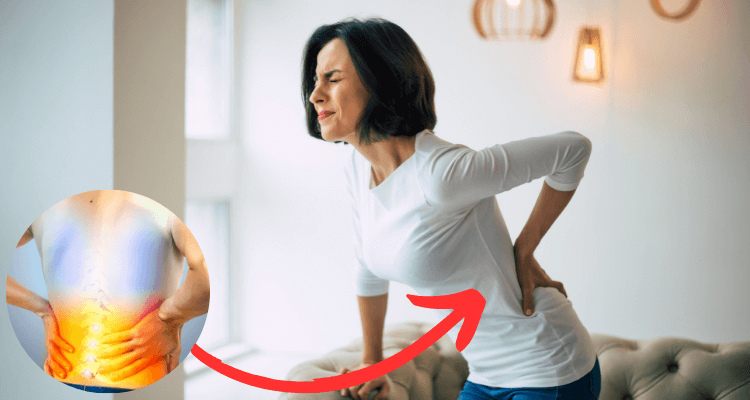85-90% of all people experience lower back pain at some point in their lives, and the causes can vary. In many cases, a definitive cause cannot be determined, but there are suspected factors for a significant proportion of back pain, such as…
Irritation or inflammation of the sacroiliac joints (SI joints), which research suggests may be the cause of up to 30 percent of all back problems. When the SI joints become inflamed, they cause pain and make it difficult to walk, and prolonged periods of immobility, such as sitting or sleeping, can worsen the pain.
But what can you do yourself to alleviate this?
6 Tips for Comfortable Sitting with SI Joint Pain
Here are some effective ergonomic adjustments and changes that can help minimize SI joint discomfort when sitting:
Choose a comfortable chair:
Find a chair that supports your spine and keeps it in a good position. This helps activate the muscles on both sides of your spine, which keep your body upright. Avoid hard, flat chairs that can hurt your SI joint.
Gentle pelvic movements:
Try gently rocking your pelvis while sitting. Rotate it like a carousel - both clockwise and counterclockwise. This movement stimulates the nerve endings in the SI joints and can improve your comfort.
Add damping:
If your chair feels like a rock, consider using a cushion. Foam or contoured cushions help distribute weight evenly and reduce pressure on the SI joint. It's generally a cheaper option than buying a new chair.
Good posture:
Don't lean forward too much. Sit upright with support from the chair, feet on the floor, and avoid crossing your legs or ankles. Good posture keeps SI joint pain at bay.
To ensure good posture, you can try adding a support cushion behind your back . Many chairs do not have optimal support for posture, but you don't have to buy expensive chairs, just slide the cushion in between your back and the chair and you're good to go.
Breaks and exercise:
Long periods of sitting can make your back muscles stiff. Take regular short breaks, stand up, stretch, and walk around. This will improve circulation and keep your hips and lower back flexible.
Tools to relieve sciatica:
Even when you're sitting, you can use proven tools to relieve SI joint discomfort. The BackComfort belt helps you move and sit more comfortably by providing dual compression to your lower back, releasing nerves and stabilizing your posture, no matter where you are.
If pain persists when sitting despite these adjustments, and you have a job that requires sitting, consider using a standing desk, which allows for versatility for your back throughout the workday.
4 tips for sleeping comfortably with SI joint pain?
Choose the right sleeping position:
When it comes to lower back pain, it's important to choose the right sleeping position. Try sleeping on your back. This keeps your spine in a neutral position, and you can increase comfort by placing a soft pillow or towel under your knees.
Sleep on your side with a pillow:
If sleeping on your side is more comfortable, try sleeping with the painful side facing up. Place a special pillow under your lower back to help it rest and relieve tension while you sleep.
Avoid sleeping on your stomach:
Sleeping on your stomach can increase pain in your SI joints and neck. Try sleeping on your back or side if you have lower back pain.
Sleep health:
Good sleep is important for recovery. Establish a regular sleep schedule, develop a calming bedtime routine, and avoid caffeine and alcohol before bed.
It is important to note that changing your sleeping position may feel uncomfortable at first and it may take a few days to get used to the new sleeping position. It is important that you continue to change your sleeping position and maintain a good sleep routine.
SI joint pain can be frustrating and painful, but various strategies can be used to relieve the discomfort and enable you to sit and sleep more comfortably. Choosing the right chair or mattress, using pillows and supports, and adjusting your posture can help reduce pressure on the SI joint and relieve pain.




Leave a comment
This site is protected by hCaptcha and the hCaptcha Privacy Policy and Terms of Service apply.